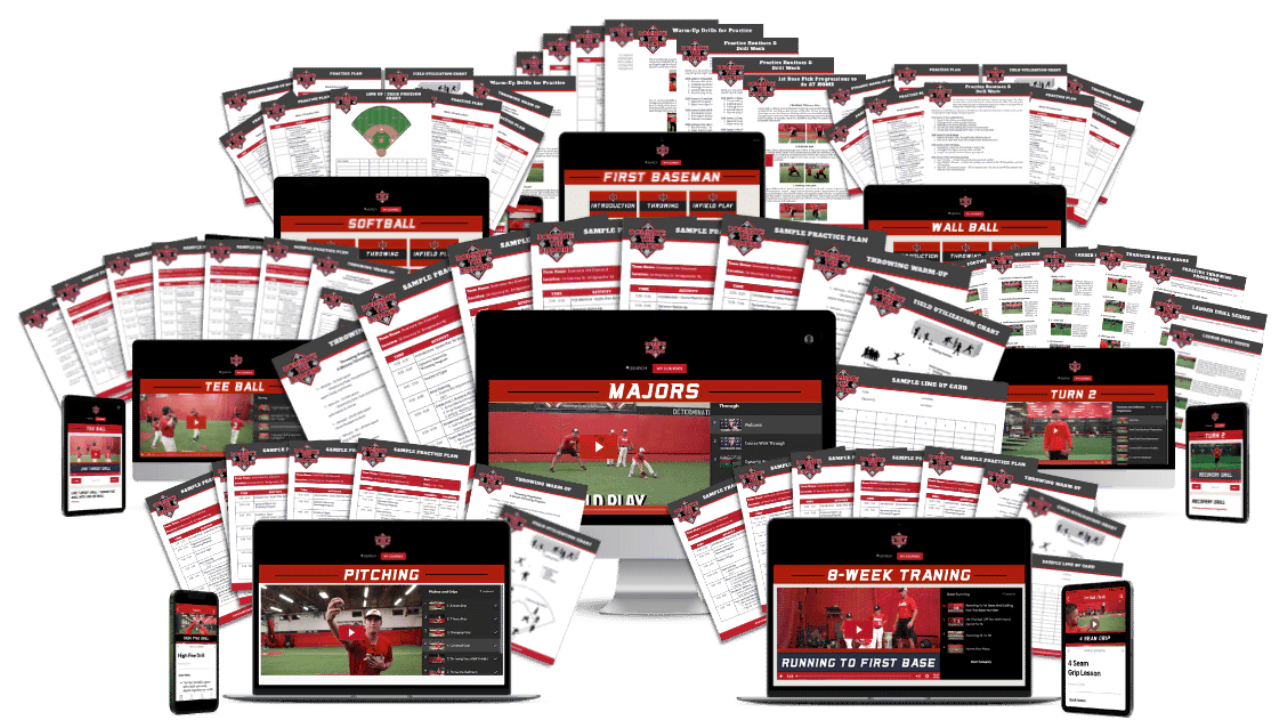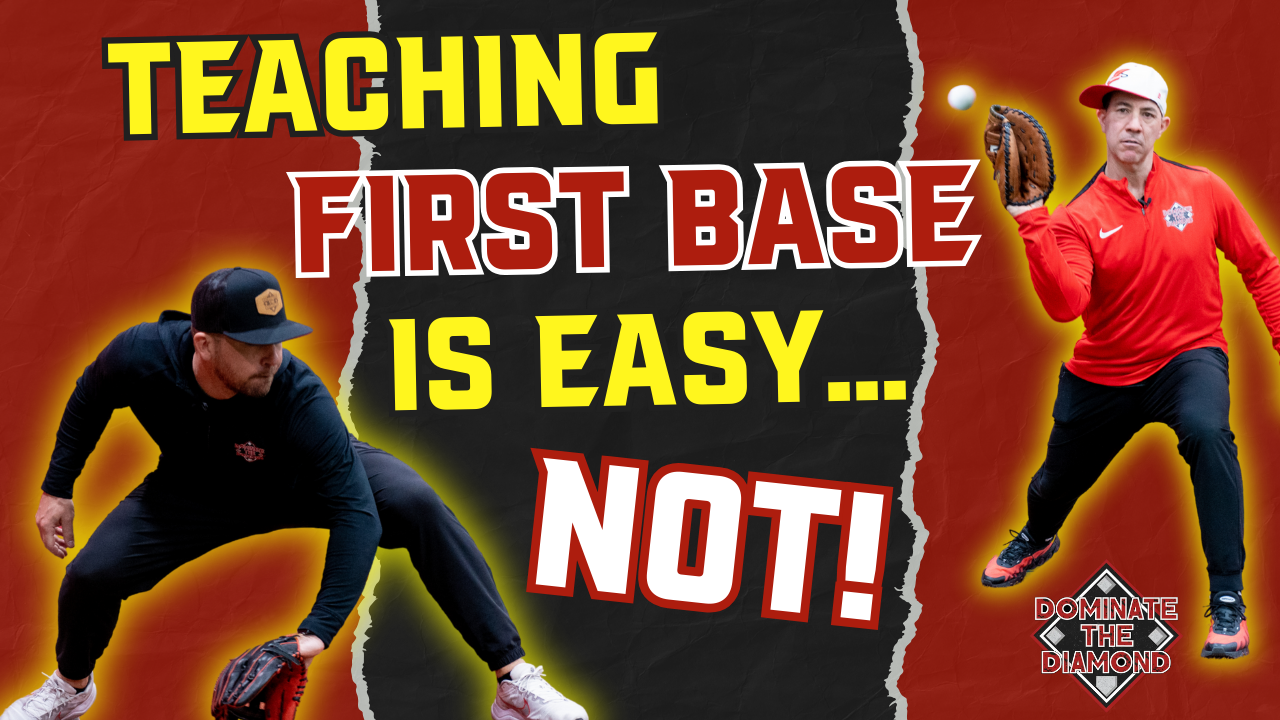Accomplish More In Practice With Player-Run Stations

As a youth baseball coach, managing practices can get overwhelming. No matter how carefully you plan your drills, eventually players start zoning out and losing interest. Trying to be everywhere at once is like juggling five balls with one hand. It’s a common problem many coaches face but there’s a powerful solution. Including player-run stations into your practice plans can amp up player engagement while boosting the effectiveness of your practices.
The Potent Impact of Player-Run Stations
Imagine a practice where players aren’t just participants but active contributors. Involving everyone in leading practice stations gives them the opportunity to take on new responsibilities. This not only ignites their enthusiasm but improves their leadership skills.
For example, during one practice, we had one of the team leaders assist in a base running circuit. He acted as the pitcher on the mound while the base runners were stationed at home plate, first base, and second base. Each base runner worked off the same pitcher, who was practicing his timing to the plate and his pick-off moves. This setup allowed the coaching staff to station themselves at each base and provide focused assistance to the smaller groups on their base running techniques.
This approach does more than fill in the gaps where coach attention is spread thin - it transforms your players into strong leaders and eager learners. Having players explain and execute a drill can spark a sense of ownership and pride. Boosting their engagement and deepening their understanding of the game helps players become more confident and proactive on the field.
How To Plan Player-Run Stations
The shift to player-run stations starts with identifying which players are ready to step into a leadership role. Look for those who not only have a solid understanding of the game but also have natural communication skills.
For example, last season, we asked the other pitchers on the team to chart pitches for the pitcher during his bullpen session. One player, who usually doesn’t talk much, was able to speak up and offer assistance and guidance to the pitcher. He provided feedback and advice based on information he had previously received from a coach. Training him to run a charting station on his own created a sense of ownership for him and helped bring him out of his shell.
Once you’ve chosen your leaders, give them a quick training session on how to manage each station. This helps to prevent confusion and to make sure that the drills run smoothly. It’s important to be clear on the objectives for what the skill station should achieve. Being clear helps players to stay focused and understand the goals they are working towards.
Drills and Exercises for Player-Run Stations
Hitting Station: Tee Work
- Objective: Improve bat control and swing mechanics.
- Drill: Players take turns hitting off a tee. Leaders can provide feedback on stance, hand position, and follow-through
Fielding Station: Ground Ball Drills
- Objective: Enhance fielding skills and footwork.
- Drill: Players practice fielding ground balls, focusing on getting in front of the ball, fielding it cleanly, and making accurate throws
Take a look at this YouTube video that demonstrates effective grounding ball drills:
Base Running Station: Base Stealing
- Objective: Improve base running technique and speed.
- Drill: Players work on their leads, jumps, and sliding techniques. Leaders can demonstrate proper technique and provide timing tips.
Pitching Station: Accuracy Drills
- Objective: Develop pitching accuracy and control.
- Drill: Players throw to specific targets (e.g., corners of the strike zone) while leaders observe and provide guidance on mechanics and release point.
Check out this YouTube video for a variety of pitching drill ideas:
Structuring Your Practices With Purpose
The success of player-run stations depends a lot on how you set up your practices. It’s smart to organize stations that cover the key skills of baseball to improve overall development. At one practice, we had stations for hitting, fielding and base running, each led by a different player. This kept the practice exciting and gave players the opportunity to work on different skills at the same time.
Rotating players through the stations every 10 - 15 minutes sustains a high level of energy and prevents any one activity from becoming boring. Your role is to oversee the flow, provide guidance and make sure the activities are conducted safely and effectively.
Continuous Improvement and Flexibility
It’s important to take the time to reflect on what worked and what didn’t after each practice. Feedback from both leaders and participants can help you see how each station is performing and allow room for adjustments.
We noticed that after implementing player-run stations in our practices that players were more enthusiastic and showed improvement in specific skills. This motivated us to add more stations focused on these skills to uplevel our players’ overall performance.
Recognizing and celebrating the efforts and successes of your players can do wonders for their confidence and sense of morale. The leadership skills and dedication that blossoms by including player-run stations in your training cannot be underestimated.
Empowering Young Athletes
Introducing player-run stations isn’t just about tweaking your coaching approach - It’s a game-changing strategy designed to empower young athletes. Putting trust in them by giving them leadership roles can transform routine drills into priceless opportunities to learn mentorship and teamwork skills. Imagine the satisfaction of watching your players grow and thrive in their newfound responsibilities and injecting fresh enthusiasm into every practice session.
You can take the first step towards leveling up your practices with our free, easy-to-follow pre-made practice plans. They are designed to help you implement player-run stations with ease. Download now and fill your team with engaged leaders and skilled athletes.









